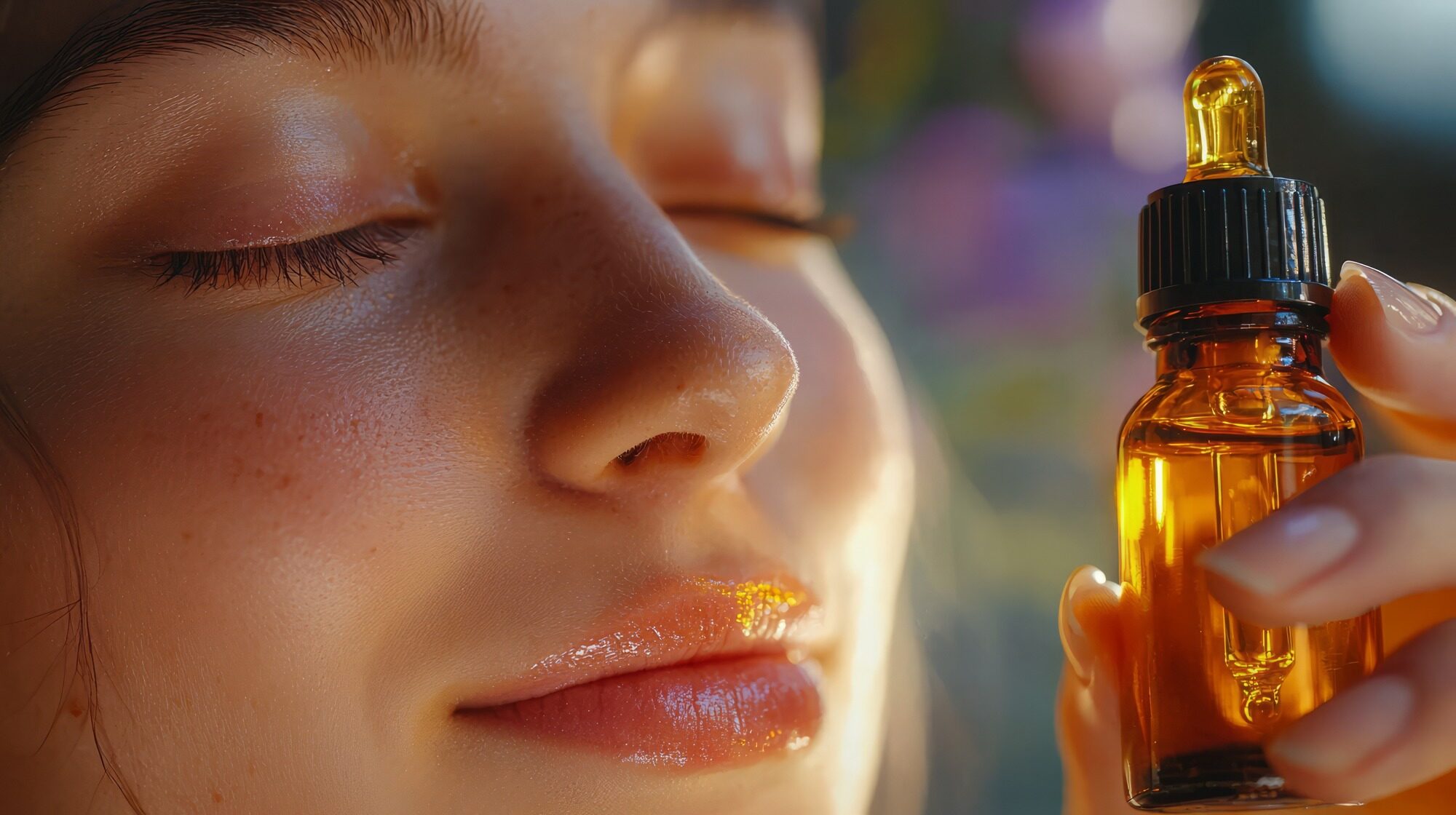The following changes cause photoaging as we age:
1) Overexposure to UV radiation increases the formation of reactive oxygen species (ROS: peroxide, superoxide, hydroxyl radical, and singlet oxygen), which damage skin cells and break down proteins such as collagen and elastin.
2) Slower skin cell turnover. There is a natural process whereby skin cells at the base of the epidermis reproduce, then flatten and migrate to the surface, where they are eventually shed. The process takes 28-40 days. When we are young, skin cells reproduce at a fast rate, leading to plump, hydrated, and smooth skin, with an even tone. As we age, the rate of cell replication slows, diminishing the appearance of the skin.
3) Decrease in the number of dermal fibroblasts. Fibroblasts are connective tissue cells that produce collagen, which provides structure to the skin, and elastin, which provides elasticity. Over time, the fibroblast density drops, with a decrease in collagen and elastin production.
4) Deceased estrogen production in perimenopausal and menopausal women negatively impacts the appearance of the skin. Estrogen improves skin quality in the following ways:
Increases fibroblast density and production of collagen and elastin
Improves hydration by increasing production of hyaluronic acid and mucopolysaccharide
Reduces inflammation within the skin by decreasing production of inflammatory mediators called chemokines and metalloproteinases
5) Decreased production of hyaluronic acid, which binds to water to hydrate skin
6) Vitamin C levels are lower in aged and/or photodamaged skin. Vitamin C has the following benefits:
- Vitamin C is essential for the formation of collagen
- Functions as antioxidant, which reduces photodamage
- Interferes with melanin, reducing the formation of sunspots and brightening the skin
7) Vitamin B3 (niacinamide) has the following benefits:
- Shrinks pores
- Smooths skin
- Brightens skin
- Reduces fine lines
Top treatments to prevent and treat aging of skin:
1) Sunscreen is the most important skin care product. I recommend using it daily, despite the amount of sunshine that day. UV rays penetrate through clouds and continue to be a risk on overcast days. I use Elta MD; it is a quality product that disappears into the skin without leaving a residue. Elta MD products are available in mineral-only form or with chemicals. I use the mineral-only form to prevent stinging of the eyes that occurs when using chemical sunscreens. There is no compelling evidence that chemical sunscreens have an adverse effect on the human body.
2) Retin-A, a vitamin A derivative, is one of the most effective treatments to improve skin quality. It is significantly more potent than retinol, although redness and flaking can occur with Retin-A. I use the 0.025% cream nightly. A higher dose would likely be more effective; however, I made the decision to continue this dose because of its tolerability. Benefits of Retin-A:
- Increases cell turnover
- Increases production of collagen
- and elastin
- Shrinks pores
- Treats acne
- Reduces inflammation
- Improves skin texture
Recommended daily skin treatments:
Morning:
Cleanse the face with a non-soap cleanser such as Cera Ve Hydrating Cleanser or La Roche-Posay Hydrating Gentle Cleanser. The non-soap cleansers are gentler and do not tend to dry the skin.
Apply hyaluronic acid serum with or without niacinamide on the face and neck, then spray water onto those areas. Hyaluronic acid itself is not a moisturizer per se; it binds water. Unless you apply water to the face, hyaluronic acid will not be as helpful. There are many brands, I use the company Maelove because of the quality and price (they sell directly to consumers, which lowers the price). Allow a few minutes between each product application.
Apply vitamin C serum. Again, I use Maelove as one product example. Fresh vitamin C serum is clear. If it has turned yellow or orange, it has been oxidized and should be discarded.
If you are perimenopausal or menopausal, consider adding estrogen in the form of estradiol or estriol cream, or a non-hormone estrogen analog such as methyl estradiolpropranoate (also known as MEP, and is sold without prescription under the brand name Emepelle). These products bind to estrogen receptors on fibroblasts, which causes increased proliferation of fibroblasts and improved production of collagen and elastin.
Apply a moisturizing cream. I use La Roche-Posay Double Repair Face Cream (which contains ceramide and niacinamide), again because of its quality and price. You can choose what works best for you.
Apply a sunscreen. I use Elta MD, there are many options, with or without chemicals, and with or without tint.
Evening:
Cleanse the face again.
Apply hyaluronic acid serum again, mist water onto face.
Apply Retin-A. This product is available only by prescription. You can start with 0.025% (cream if your skin is dry to normal, or gel if your skin is oily) 2 times weekly. Increase to every night if you are able. You can increase the potency as you go along.
Reapply moisturizer.
Consider adding a humidifier to the bedroom if you live in a dry climate. Moisture always helps.
An alpha-hydroxy acid such as glycolic acid 10% cream can be added at bedtime to exfoliate the skin by removing dead skin cells. Glycolic acid also increases the production of collagen and hyaluronic acid in skin. I advise using it no more than 2 times weekly to avoid causing irritation.
